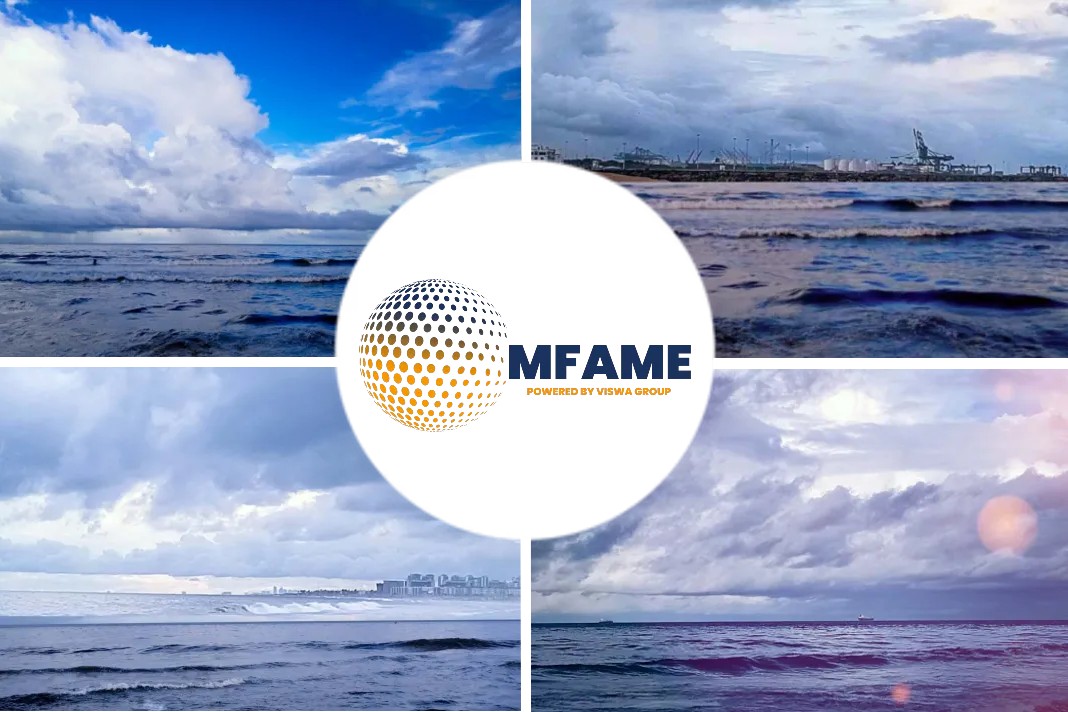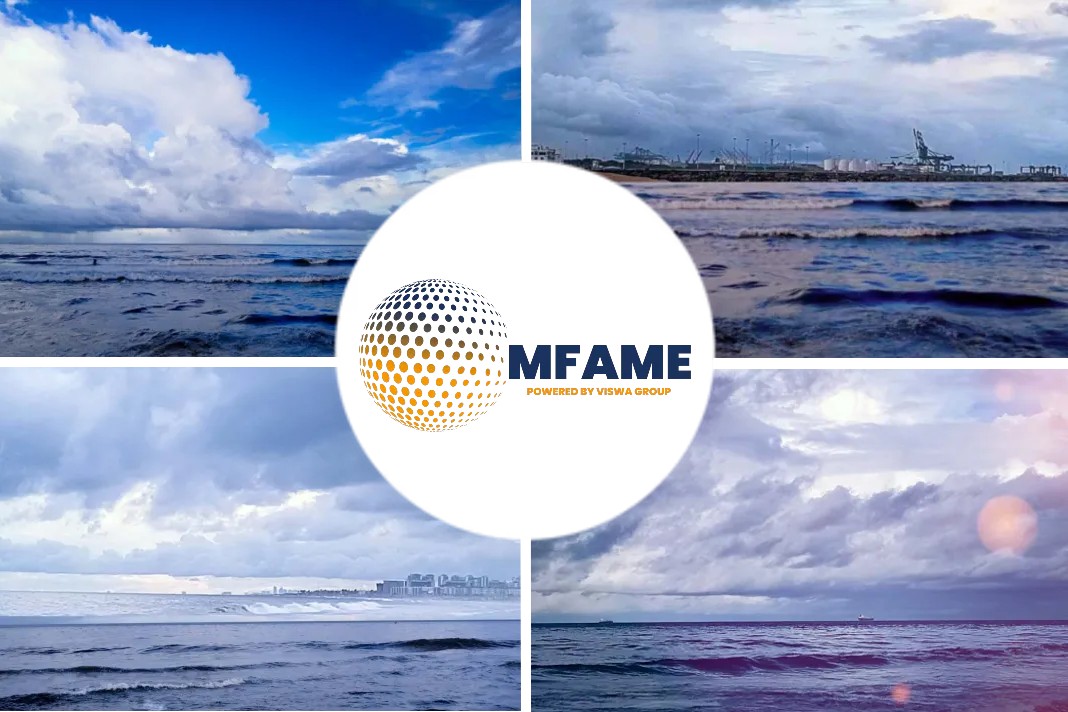According to a Freight Waves report, Ocean Network Express’ announcement that its quarterly profit “significantly increased” could be the understatement of understatements.
- ONE’s third-quarter after-tax profit skyrocketed by something along the lines of 18,800% — from $5 million in 2019 to $944 million in 2020.
- ONE’s fiscal year runs from April 1 to March 31. The Singapore-headquartered ocean carrier, which launched service in April 2018, has been steadily gaining steam, turning the ship around from a fiscal-year loss of $585 million in 2018 to report a fiscal-year 2019 profit of $105 million.
- ONE also used the words “significantly increased” in October to report its Q2 profit had ratcheted up by a whopping 326% — from $121 million in 2019 to $515 million in 2020.
Results in black and white
ONE does not provide color commentary on its results, simply posting an eight-page pdf to its website Friday. (When the cover and table of contents are removed, it’s actually a six-page document.) In a brief outline, ONE attributed the gigantic year-over-year Q3 gains to the “sharp recovery in cargo demand and increases in [the] short-term freight market.”
ONE also did not respond to American Shipper’s request for additional details.
Commentary can be found on LinkedIn, where SeaIntelligence Consulting CEO Lars Jensen said of ONE’s Q3 results, “Unsurprisingly, profits are very good. That is not what I find to be interesting. Instead, their freight rate development is.”
Jensen wrote, “On the Pacific headhaul, ONE rates are up 35%. [The Shanghai Containerized Freight Index] spot index is up 135% and the [China Containerized Freight Index] contract is up 55%. And for Asia-Europe, ONE’s rate is up 28% versus SCFI spot up 148% and CCFI up by 50%. This shows how it is not the entire market which has been subjected to the extreme increases recorded in recent months. Clearly some cargo has been — and still [is] — shipped at extremely high spot rates. But it is just as clear from the [Q3] data that the majority of cargo is not shipped at these rate levels.
“It is simple math. If for Asia-Europe 50% of the cargo moved on the high spot rates, ONE’s rates should be up 74%. But they are ‘only’ up 35%. Hence, simplistically, the math would add up if some 25% of ONE’s cargo moved on spot and 75% moved at rate levels pre-spike. Realistically it is more muddied as some contract rates have gone up in the meanwhile — but that by default means that it is considerably less than 25% of their volume, which has moved on the extreme spot rates,” he said.
ONE did point to higher volumes and rates, saying, “A steady recovery trend was observed in the global cargo volume. In Asia-North America trade, the cargo volume increased by approximately 25% and Asia-Europe trade also increased on a year-to-year basis. … As the cargo demand sharply recovered, the short-term freight market significantly increased.”
ONE said that seasonal factors such as Lunar New Year or the resurgence of COVID-19 could affect demand but it still expected “steady cargo volume” throughout its fourth quarter and forecast Q4 profit of $900 million.
“From the [latter] half of 2020, the entire global supply chain experienced serious disruption due to a surge in cargo volume and operational restrictions caused by COVID-19. Actions to stabilize schedule integrity and to solve space and container shortage have been undertaken and reinforced,” ONE said.
If the full-year forecast comes to bear, ONE will achieve a more than $2 billion profit increase, from $105 million in 2019 to $2.52 billion in the 2020 fiscal year.
‘Turmoil throughout the world’
Noting some of the negative impacts from the COVID-19 pandemic, ONE said, “Excessive strain on the entire global supply chain has caused turmoil throughout the world. Shipping lines have suffered vessel delays, a deterioration of schedule reliability, shortage of space and a lack of container availability have been observed.”
Nowhere does it mention the turmoil caused by the more than 1,800 containers lost from the ONE Apus during the quarter. The Apus, with a carrying capacity of 14,052 twenty-foot equivalent units (TEUs), reportedly encountered a violent storm cell about 1,600 nautical miles from Hawaii on Nov. 30 while the container ship was en route from Yantian, China, to the Port of Long Beach in California.
The storm-battered ship changed course and made its way to Kobe, Japan, where it limped into port with some containers hanging precariously over the deck on Dec. 8. Speculation floated on social media has had the cargo claims from one of the worst-ever cases of container losses topping $50 million.
In its latest update on the Apus, dated Jan. 14, ONE said 277 boxes had been discharged in Kobe. Customers were advised to check on the status of their cargo at an online information center. ONE did not respond to American Shipper’s request for updated information.
Six ships on order
ONE did say in its Q3 materials that it was taking a number of actions to “further competitiveness and differentiation.”
Those actions included signing a letter of intent for the 15-year charter of six 24,000-TEU ultra large container ships from Shoei Kisen Kaisha Ltd.
The six 24,000-TEU-plus container ships “will help bring economies of scale and significantly lower carbon emissions through a state-of-the-art hull design that aims to maximize cargo intake and minimize fuel consumption. The vessels will be equipped with exhaust gas cleaning systems to meet the emissions regulations of IMO,” ONE said in its announcement in December.
Through The Alliance, ONE said it will offer “greater capacity on trade lanes with greater cargo demand, realizing more frequency, improved transit time and a wider coverage of port pairs.” Other members of THE Alliance are Yang Ming, HMM and Hapag-Lloyd.
Bottlenecks persist
Supplemental material posted on ONE’s website included a message from CEO Jeremy Nixon, who said the ocean carrier was “enormously grateful to our seafarers, who have endured considerable hardships to keep the world supplied with raw materials, fuel, food and goods, including medical supplies.”
“With the launch of the Neptune Declaration on Seafarer Wellbeing and Crew Change … we’re joining stakeholders from across the global maritime value chain to establish a collaborative and multi-stakeholder response needed to solve the international crew change crisis. We must protect the 2 million seafarers across the world’s oceans and recognize the critical role they play as ‘key workers’ [on] the front line in transporting humanitarian products and protecting the global economy,” Nixon said.
The crew crisis and pandemic have caused operational challenges that are “straining global supply chains,” he said. “The situation has been exacerbated by landside delays and port infrastructure challenges. Since last September, we have fully deployed all of our available ships and equipment in the service.”
ONE also relocated empty equipment to “unexpected high-demand areas and also procured additional empty containers,” Nixon continued. “Despite our efforts, we anticipate that bottlenecks will continue to persist until the landside situation improves.”
Did you subscribe to our daily newsletter?
It’s Free! Click here to Subscribe!
Source: FreightWaves























